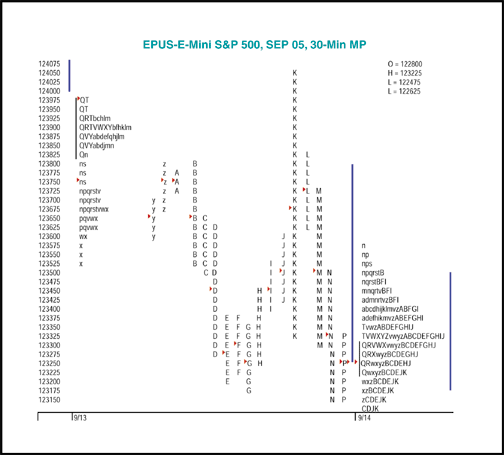Futures Off-Floor
The Development Of A Futures Trader
by Thomas P. Drinka, Ph.D., with Nathan A. Losey and Ryan P. Lauer
Here's a look at the trading methodology implemented by two futures traders. By using Market Profile, they successfully traded the emini.
IN my opinion, the teaching of off-floor futures trading is a relevant part of academic curricula. In fact, at Western Illinois University there are six agricultural economics (AE) courses related to the use of futures and options for hedging and speculation.
In one of the advanced AE courses, students learn about the traditional Market Profile theory devised by J. Peter Steidlmayer and the Chicago Board of Trade (CBOT) in the early 1980s. This course is concerned with simulated, real-time trading utilizing Market Profile. Students have access to six CQG terminals that disseminate real-time data from the CBOT, Chicago Mercantile Exchange (CME), Euronext.liffe, and the Singapore Exchange. There, they conduct simulated real-time trades.
While in these courses, two of my former students configured laptop computers in order to trade electronic markets. This article reviews their trading methodology and the first-year trading performance for one of them.
TRADING METHODOLOGY
Rather than diversify among numerous futures products, I prefer to specialize in daytrades rather than longer time frames. Specializing in only one futures product allows you to get a feel for that market; since each product is traded by a different set of market participants, you have a better chance of gaining insight into market behavior. Specializing in daytrades relieves the trader of overnight risk exposure.
Further, we used Interactive Brokers' software to execute online daytrades of CBOT emini 30-year Treasury bond and CME emini Standard & Poor's 500 futures. Trade management involves the exploitation of "reference" and "buying/selling activities." Reference includes support and resistance provided by the highs and lows of previous value areas, as well as by trends, channels, and the highs and lows in daily and 30-minute time frames. In addition, reference includes buying and selling activities involving double bottoms and tops, range extension, and penetration into and out of previous value areas.

FIGURE 1: MARKET PROFILE. On September 13, 2005, you can see that there were several opportunities to open short and long positions.
Excerpted from an article originally published in the November 2005 issue of Technical Analysis of STOCKS & COMMODITIES magazine. All rights reserved. © Copyright 2005, Technical Analysis, Inc.
Return to November 2005 Contents